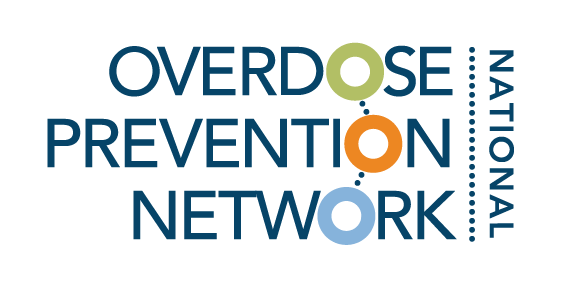
Resource Library
Toolkits, guides, and other resources vetted by experts in overdose prevention.
Filter by category and tags, or search by keyword (ex. COVID-19, harm reduction).
MAT Treatment for Pregnant Women Flyers
This flyer is an example of a resource created by Sacramento County Opioid Coalition and is available in both English and Spanish. This resource is made available for use in clinics and offices.
The 2022 National Healthcare Quality and Disparities Report: We Still Have Much Work to Do
How is the US really doing on health care? Knowing the current trends is key to our work, and this annual report from the Agency for Healthcare Research and Quality (AHRQ) is the essential guide.
Four Data Driven Harm Reduction Strategies in Overdose Prevention
What steps can communities take to engage youth in overdose prevention? The following summary provides concrete examples of data-driven strategies to address rising rates of overdose among youth. Case studies were drawn from overdose prevention coalitions participating in the California Overdose Prevention Network (COPN) Accelerator 3.0 Program. These can serve as models for other coalitions and organizations across the country.
Four Data Driven Strategies to Engage Youth in Overdose Prevention
What steps can communities take to engage youth in overdose prevention? The following summary provides concrete examples of data-driven strategies to address rising rates of overdose among youth. Case studies were drawn from overdose prevention coalitions participating in the California Overdose Prevention Network (COPN) Accelerator 3.0 Program. These can serve as models for other coalitions and organizations across the country.
Supporting Coalitions in Harm Reduction Services & Approaches for Youth
The National Harm Reduction Coalition (NHRC) worked with California Overdose Prevention Network (COPN) funded multi-sector coalitions throughout the state in 2022 and focused on supporting coalitions in harm reduction services and approaches for youth. This handout is of the key highlights from the COPN Accelerator 3.0 Program of coalitions working NHRC and implementing harm reduction services for youth.
Communities Driving Health Equity: A Spotlight Video Series
The National Academy of Medicine (NAM) is proud to present a documentary video series that spotlights local organizations across the U.S. advancing health equity for their communities by addressing the environmental, social, economic, and structural challenges that may impact residents’ health. The videos show that, while challenges are numerous, progress is possible when community members, organizations, funders, and policy makers work together to drive local-level solutions that improve health equity and well-being for all.
COPN Q & A on the Opioid Settlements in California
The Q&A below is based on presentations during the Fall 2022 COPN Convening with Christine Minhee, J.D., Founder of OpioidSettlementTracker.com and Louise Renne, LL.B., from Renne Public Law Group. You can access the full recording, slides, and resources here.
NOPN Q & A on the National Opioid Settlements
The Q&A below is based on a presentation from September 7, 2022 by Christine Minhee, J.D., Founder of OpioidSettlementTracker.com. You can access the full recording, slides, and resources here.
Fentanyl Overdose
In this JAMA Patient Page, Fentanyl Overdose, it provides an overview on how fentanyl overdose occurs, how it is treated, and other information on fentanyl.
Achieving Health Equity: Tools for a National Campaign Against Racism
This video addresses the three dimensions of health intervention are providing health services, addressing the social determinants of health (including poverty), and addressing the social determinants of equity (including racism). Racism—including institutionalized, personally-mediated, and internalized racism—is a root cause of “racial”/ethnic differences in health outcomes. Dr. Camara Jones as she presents analogies and allegories to help illustrate the three levels of racism and the impacts of racism on the health and wellbeing of our nation. The discussion will equip attendees to ask “How is racism operating here?” and to organize, strategize, and act.
Racial Equity Impact Assessment Toolkit
The racial equity impact assessment toolkit can be a vital tool for preventing institutional racism and for identifying new options to remedy long-standing inequities.
DHCS California's Opioid Settlements Info
This page provides information for California and the cities, counties, and other eligible subdivisions (“Participating Subdivisions") regarding the California Opioid Settlements.
Health Equity Guide Webinar Series
This 4-part webinar series hosts national experts and local health departments to discuss their work to advance health equity. Each webinar focuses on a set of strategic practices that health departments can take to pursue a wall-to-wall transformation of how they work internally, with communities, and alongside other government agencies.
Traditional Practices & Native Substance Use Healing (August 2022)
Tribal MAT ECHO training from August of 2022 that discusses the benefits of linking Native traditional practices with substance use recovery.
Preliminary Monthly Fatal Drug-Related Overdose Counts for August 2021 – July 2022
The CDPH Substance and Addiction Prevention Branch (SAPB) has recently updated its new data resource - Preliminary Monthly Fatal Drug-Related Overdose Counts for August 2021 - July 2022. This preliminary statewide monthly count data is presented by substance and posted on the Overdose Prevention Initiative (OPI) Data webpage. It is intended to provide death data to our partners more quickly. These counts may not represent all overdose-related deaths that occurred during the corresponding period. Subsequent versions of this data resource will also be available on the OPI Data webpage. The CDPH team continues to update the California Overdose Surveillance Dashboard with death data.
Expanding Access To Medications For Opioid Use Disorder Treatment For Justice-Involved Populations Under Community Supervision: Best Practices From Four States
In July 2021, four states discovered a variety of policy and programmatic approaches to improve the medications for opioid use disorder (MOUD) landscape. The four states were able to pilot interagency collaborations, launch training and education curricula and explore innovative solutions around screening, treatments and case management.
Guide to Harm Reduction in the Emergency Department
While many medical professionals promote an abstinence-based approach to discussing drug use, offering tools and education around safer drug use supports patient health if they continue to use drugs. Harm reduction is the moral foundation and root practice of offering these tools and services. View this guide from the CA ED Bridge Program on how to establish a harm reduction program in your hospital and easily access related resources.
Drug Overdose Response Webpage
The California Department of Public Health Overdose Prevention Initiative (CDPH OPI) shares recommendations and resources to statewide partners in response to increases in drug overdoses statewide. Each recommendation lists resources by partner type (public safety, public health departments, community-based organizations, health care providers and settings, harm reduction organizations, medical examiners and coroners, and public health and forensic laboratories). Identify your partner type and review the resources for local overdose prevention and response implementation. The CDPH OPI team will continue to update this webpage with new information and resources as needed.
How to Use a Coalition Membership Survey
Michael Miller of Brown Miller Communications explains how to use the coalition membership survey as a tool to better understand your coalition and how it can improve.
How to Build a Communications Plan
Michael Miller of Brown Miller Communications explains how to map out an effective and coherent communications strategy.








